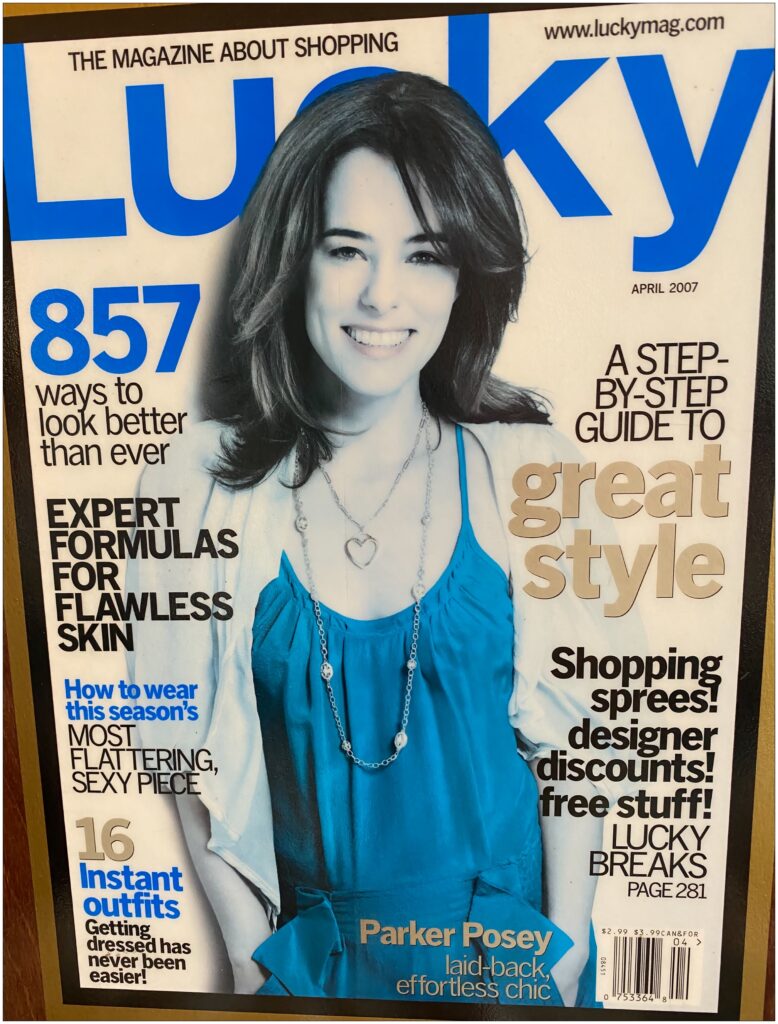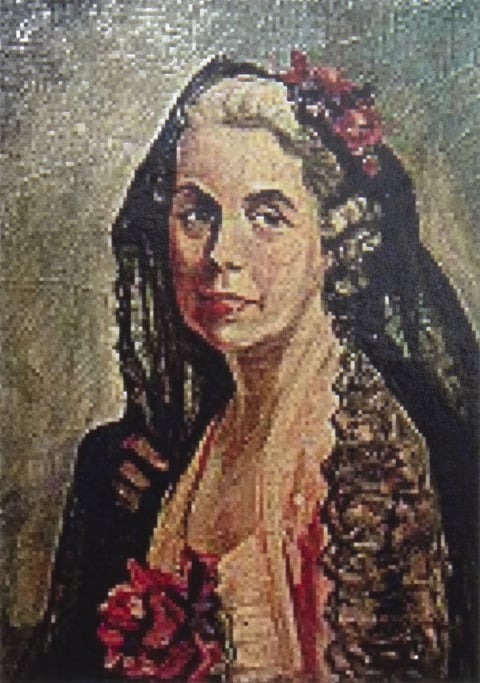by KEM Huntley

| The House of Yes and Love and Death on Long Island are two indie presentations that have more than 90210 cast members in common. Without getting too caught up in histrionics and endless details that often attend melodrama, each film offers the same premise: mad love exists. Each film holds the same expectation, as well. The viewer will not look askance at the “all’s fair in love and war” tactics, but will instead nod their head in affirmation that the heart does what it damn well pleases. For recent widower and recluse, Giles De’ath (John Hurt), the main character in Love and Death on Long Island, written and directed by Richard Kwientniowski and loosely based upon Thomas Mann’s Death in Venice, the story begins as he ventures into the present day (overall story concern) after accepting (story driver-decision; overall story solution) an invitation to be interviewed on the “wireless.” When asked if he uses a word processor for his novels, he is bemused, tartly replying he is a writer; he does not “process words.” It is here established that the notable British author is completely out of touch with the 20th century (overall story domain-universe), illustrated again as the camera focuses on him ruefully looking through the front door mail slot at forgotten house keys, his gaze taking in an archaic life. As Giles is locked out and must wait before his niece is available to bring the extra set of keys, he decides to go to the cinema. He mistakenly walks into a matinee of “Hotpants College II,” instead of the latest E. M. Forster adaptation. Rising to leave (main character symptom-reaction), he is dumbstruck by the beauty of its dreamboat star, impact character Ronnie Bostock (Jason Priestly), a screen heartthrob he will later compare to a painting of the writer Chatterton hanging in the Tate Gallery. At this point, emphasis in the overall story throughline is placed upon the thematic conflict of attraction vs. repulsion, the clash between obsolescence and technology (overall story benchmark-progress) and high art and popular culture. Giddy Giles begins the quest his own fictitious characters engage in (main character domain-physics) to learn (main character concern) all about the object of his desire. Hampered by the ministrations of his nosy parker housekeeper, and well-intentioned literary agent (main character problem-protection), he restricts their possible interference (main character approach-do-er) of his foray into “finding beauty where no-one (at least in his milieu) seems to look”: fan magazines, situation comedy, B grade movies. While mooning over Ronnie, Giles comes to terms with the present (outcome-success). He is compelled to purchase and master the video player and “goggle box,” open an account at the video store (to rent the Ronnie film festival, “Tex Mex” and “Skid Marks”), hook up an answering machine to take messages while cutting and pasting his Ronnie collage, and finally, jetting to Long Island (main character response of proaction), where he will strategize (main character thematic issue) how to meet the actor. Giles holes up in the roadside motel of Ronnie’s town, run by yet another interfering and overprotective landlady. Inside he scratches out tactics to determine his film idol’s whereabouts: “1. Hire detective 2. Bribe postman” (logical problem solving style), but it is his painstaking investigation (main vs. impact story catalyst) that pays off when he ascertains Ronnie’s exact location and trumps up a relationship with the lovely Audrey, Ronnie’s fiancée (overall story dividend-learning). Like an infatuated schoolgirl, Giles sits anxiously by the telephone for hours (main vs. impact character inhibitor-need), until the beautiful couple rings up with a dinner invitation. Ronnie represents the emotional manipulation (impact character domain-psychology) of mass media, yet he repudiates (impact character problem-non-acceptance) his teen beat status-despite his photogenic “files of smiles” he wants to be a serious actor (impact character benchmark). His initial appraisal (main vs. impact character thematic issue) of the old gentleman is based on Giles’ fabrication and the teen’s own conviction that “British stuff is cool,” yet this first impression (appraisal) is his critical flaw. Giles flatters the boy with what he needs (impact character thematic issue) to hear-he has “the look of a young Olivier” and the potential (main vs. impact character story problem) for Shakespeare. Astute Audrey understands, however, that “something is rotten in the state of Denmark” and arranges (impact character unique ability-permission) to effectively remove Ronnie from Giles’ advances (main character growth-stop). Giles reacts (main vs. impact character story symptom) to Ronnie’s impending departure by confessing (main vs. impact character response-proaction) his desperate love to the boy in the local hamburger dive. That each has a different point of view (main vs. impact character story domain-mind) is underscored as they face each other from across the vinyl booth. It is clear Giles is as steadfast (main character resolve) in his disdain for the popular arts as he is in his devotion to Ronnie, contemptuously dismissing Ronnie’s adolescent audience and American “contacts” and entreating the actor to fall in with a traditional European relationship of mentor and student, on the order of Rimbaud and Verlaine. Rattled, Ronnie refuses to consider the offer (overall story consequence-conscious), and the relationship, heretofore certain (main vs. impact character story solution) to flourish is ended. In the erstwhile author’s world, the quest is not a success without sacrifice. Giles faxes a love letter to Ronnie that includes a revised scene for “Hot Pants College III.” On the way to the airport he inquires of the cabby if faxes can be retrieved. Shaking his head no, the cab driver asks Giles if he would like to return to the motel anyway. Giles knows there is no turning back (story limit-optionlock). With a smile (judgment-good), he slips on the new wave sunglasses-a gift from Ronnie-and waves the driver to continue on (main character solution-inaction). Ronnie’s change is depicted on-screen in his new film as he delivers Giles’ eulogy to his character’s mother, an indication he will now aspire to something more than performing for the “rabble in the pit.” In the House of Yes, written and directed by Mark Waters, the overall story concern is how the memory of the day JFK died–the same day Daddy tried to leave: “Everybody remembers that day. Exactly what they were doing.” The overall story goal, in particular, is the memory twins, (main vs. impact story domain-universe) Jackie-O (Parker Posey) and Marty (Josh Hamilton), share of their illicit affair that occurred the day they attended an Ides of March party . . . Jackie O costumed as Jacqueline Bouvier Kennedy pirouetting: “. . . in a pink Chanel suit and pillbox hat and blood on my dress. Well, ketchup actually and other stuff too, like macaroni kind of glued on like brains. It was more tasteful than it sounds.” Jackie-O is another main character zealous (do-er) in her efforts (main character domain-physics) to fulfill desires (main character problem). When impact character Marty, comes home to Washington D.C. Thanksgiving 1982-“20 years after the Kennedy assassination”-and announces (story driver-action) his engagement to Lesly (Tori Spelling), he has sealed his fate (main vs. impact character issue). The circumstances (main vs. impact character domain-universe) of the twins’ relationship are such that any plan for a normal life Marty attempts to implement (impact character concern-conceptualizing) is anarchy (main vs. impact character problem-chaos). Marriage is an act the unhinged Jackie-O will steadfastly (main character resolve) not allow. Mama (Genevieve Bujold), very French Gothic, demands a private word with her son: Mama: You, a fiancée here, why? Marty: I love her and I’m just trying to follow procedure (impact character symptom-order). Mama: Marty, your sister has been out of the hospital less than six months. Last week she nearly lost it because the seltzer water was flat and you bring a woman home! Not just a woman, a fiancée! An anti-Jackie! Are you trying to push your sister over the edge?Marty: No. Mama: Just what, then, are you trying to do? Marty: Be normal. Family secrets and lies (overall story thematic counterpoint-falsehood), exposed or withheld, are the weapons used against artless Lesly, the fiancée who smells like powdered sugar. The family knows (overall story symptom) Marty is making a mistake. Marty had loved a lizard; Jackie-O flushed it down the toilet. Lesly’s perception overall story problem) of Marty’s glamorous twin is mistaken-she calls Jackie-O spoiled to which Jackie-O replies-“Oh please. If people start telling the truth (overall story thematic issue) around here, I’m going to bed.” What Lesly doesn’t consider (overall story benchmark-conscious), until almost too late, is that Jackie-O is insane (overall story solution-actuality) and extravagantly dangerous. An unexpected hurricane extinguishes the electrical power and all but Marty and Jackie-O retire for the evening. By candlelight, the twins play their favorite game, the reenactment of Jack Kennedy’s assassination. This leads to a reenactment of their own affaire d’ amour, unaware Lesly is watching. Crushed, Lesly allows the twins’ younger brother, Anthony (Freddie Prinze, Jr.), to make love to her, unaware Mama is watching. Confronting the naïf with what she knows (overall story symptom): “A mother doesn’t spy, a mother pays attention!”-she thinks (overall story response) Lesly will now leave alone. Instead, Lesly persuades Marty to believe the man she fell in love with is the man he truly is (impact character thematic issue of state of being), not the image he has of himself (impact character thematic counterpoint-sense of self). She implores Marty to return with her to New York. Destiny (main vs. impact character catalyst), however, prevails. Jackie-O cajoles her brother into one more dead Kennedy charade, with the promise he may leave afterwards. He foolishly does not suspect (impact character critical flaw) she may fire the pistol they have used to pretend, despite the fact Jackie-O has shot him in the past (main vs. impact character concern). Marty is gunned down, and buried in the back yard next to his father-the romantic memory of gallant men: Jack, Daddy, and Marty, preserved intact (outcome-success). In voice-over, Jackie-O reassures us: “Don’t worry about Marty. A close family like ours has to stick together. We cleared out a nice place for him out back, next to Daddy so he would stay right here with me, where he belongs (story judgment-good). Love and Death on Long Island and the House of Yes approach obsessive, irrational love with humor and compassion for its main characters, and a distant nod to their impact characters. Emphasis in each is placed upon the main vs. impact story, almost to the exclusion of the overall story throughline, much like lovers heedless to the world around them. |

Founded in 1931, Hové® is the oldest continuous perfumer manufacturer in New Orleans. The adherence to quality and personal service has been staunchly maintained through four generations of ownership in the same family. Located in one of the oldest buildings in the New Orleans’ French Quarter, Hové® uses the finest of essential oils and ingredients from all over the world to create its fragrances. Hové®’s only store is its 18th Century shop in New Orleans, but through the mail order business (and now, its online store) its fine perfumes, colognes and other fragrant products are known throughout the entire United States, Canada and many other continents.
